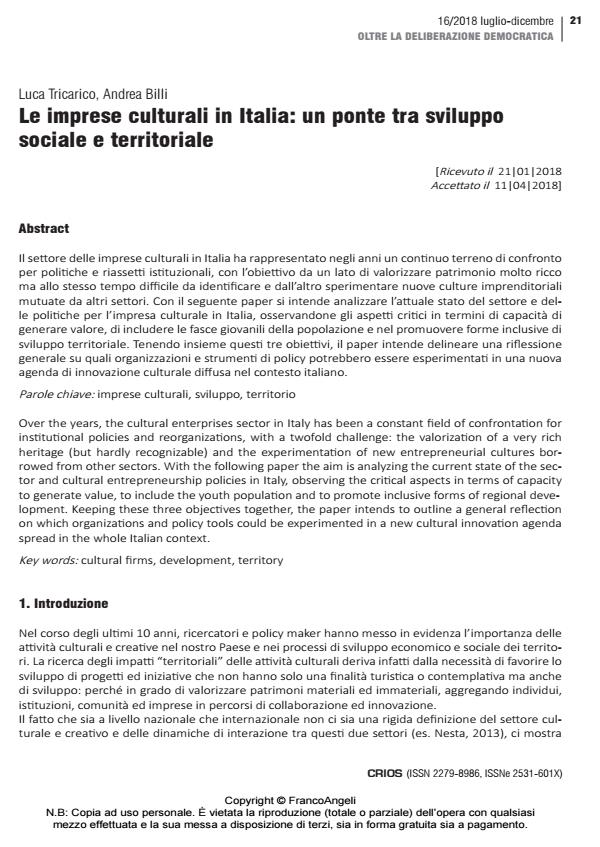Le imprese culturali in Italia: un ponte tra sviluppo sociale e territoriale
Journal title CRIOS
Author/s Luca Tricarico, Andrea Billi
Publishing Year 2018 Issue 2018/16
Language Italian Pages 14 P. 21-34 File size 682 KB
DOI 10.3280/CRIOS2018-016002
DOI is like a bar code for intellectual property: to have more infomation
click here
Below, you can see the article first page
If you want to buy this article in PDF format, you can do it, following the instructions to buy download credits

FrancoAngeli is member of Publishers International Linking Association, Inc (PILA), a not-for-profit association which run the CrossRef service enabling links to and from online scholarly content.
Over the years, the cultural enterprises sector in Italy has been a constant field of confrontation for institutional policies and reorganizations, with a twofold challenge: the valorization of a very rich heritage (but hardly recognizable) and the experimentation of new entrepreneurial cultures borrowed from other sectors. With the following paper the aim is analyzing the current state of the sector and cultural entrepreneurship policies in Italy, observing the critical aspects in terms of capacity to generate value, to include the youth population and to promote inclusive forms of regional development. Keeping these three objectives together, the paper intends to outline a general reflection on which organizations and policy tools could be experimented in a new cultural innovation agenda spread in the whole Italian context.
Keywords: Cultural firms, development, territory
Luca Tricarico, Andrea Billi, Le imprese culturali in Italia: un ponte tra sviluppo sociale e territoriale in "CRIOS" 16/2018, pp 21-34, DOI: 10.3280/CRIOS2018-016002